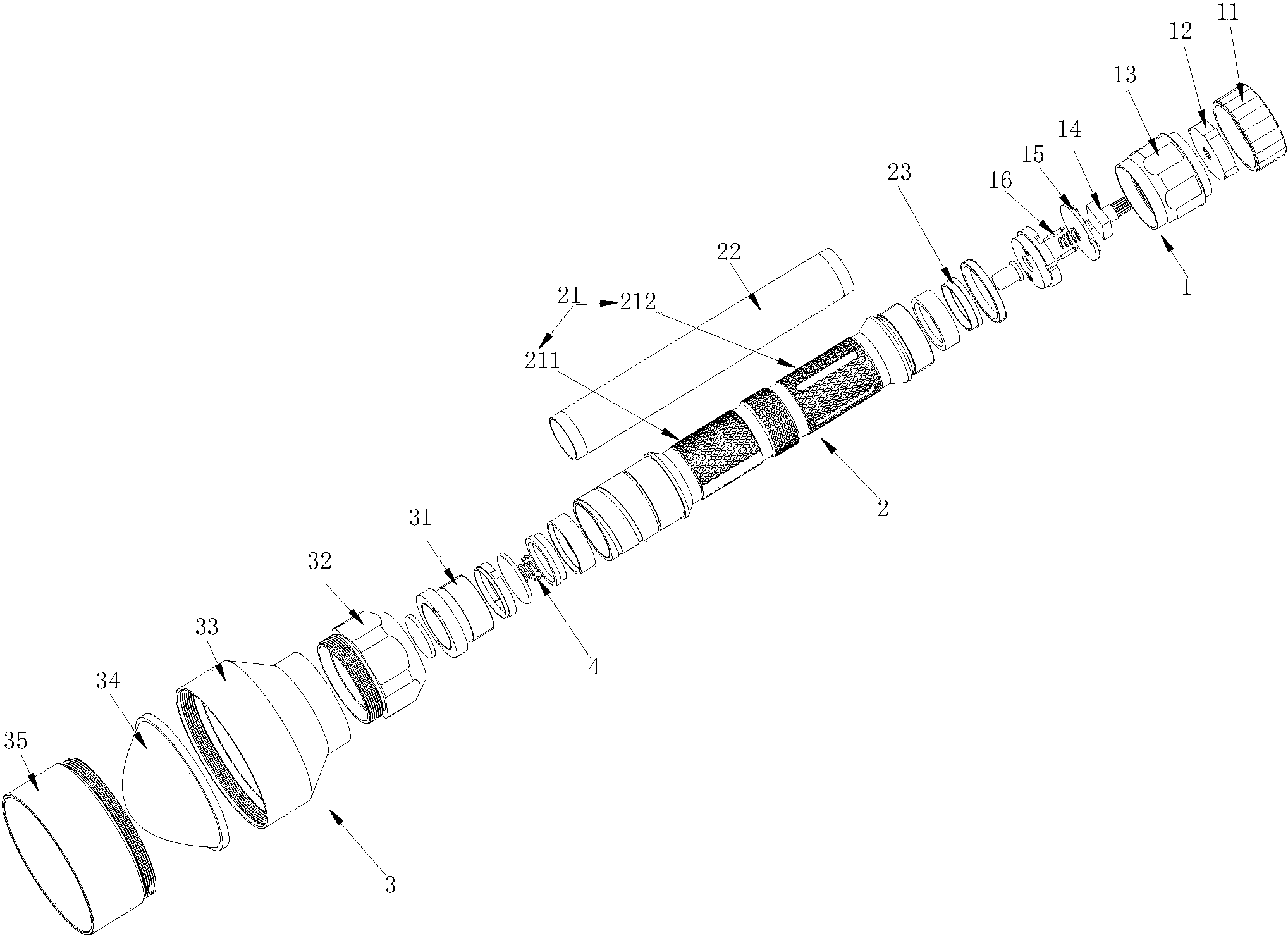Manget无极毗连 _无极链接吗(无极链是什么项目)
第一部分 名词
I.名词的种类:
专闻名 词
平凡 名词
国名地名流 名,团体机构名称
可数名词
不可数名词
个体名词
团体 名词
抽象名词
物质名词
II.名词的数:
1. 规则名词的复数情势 :名词的复数情势 ,一样平常 在单数情势 背面 加-s或-es。现将构成方法与读音规则列表如下:
规则
例词
1
一样平常 环境 在词尾加-s
map-maps, sea-seas, girl-girls, day-days
2
以s, x, ch, sh末了 的名词后加-es
class-classes, box-boxes, watch-watches, dish-dishes
3
以-f或-fe末了 的词
变-f和-fe为v再加-es
leaf-leaves, thief-thieves, knife-knives,
wife-wives, half-halves
加-s
chief-chiefs, proof-proofs, roof-roofs
4
以辅音字母加y末了 的名词,变y为i加-es
party-parties, family-families, story-stories, city-cities
5
以元音字母加y末了 的名词,或专闻名 词以y末了 的,加-s
toy-toys, boy-boys, day-days, ray-rays, Henry-Henrys
6
以辅音字母加-o末了 的名词
一样平常 加-es
Negro-Negroes, hero-heroes, potato-potatoes, tomato-tomatoes
不少外来词加-s
piano-pianos, photo-photos, auto-autos, kilo-kilos, solo-solos
两者皆可
zero-zeros/zeroes, volcano-volcanoes/ volcanos
7
以元音字母加-o末了 的名词加-s
radio-radios, bamboo-bamboos, zoo-zoos
8
以-th末了 的名词加-s
truth-truths, mouth-mouths, month-months, path-paths,
2.不规则名词复数:英语里有些名词的复数情势 是不规则的,现归纳如下:
规则
例词
1
改变名词中的元音字母或其他情势
man-men, woman-women, foot-feet, goose-geese, mouse-mice
2
单复数雷同
sheep, deer, means, works, fish, yuan, jin,
3
只有复数情势
trousers, clothes, thanks, goods, glasses,
4
一些团体 名词总是用作复数
people, police
5
部分 团体 名词既可以作单数(团体 )也可以作复数(成员)
class, family, crowd, couple, group, government, population, team, public, party
6
复数情势 表现 特别 寄义
customs(海关), times(期间 ), spirits(感情 ), drinks(饮料), sands(沙岸 ), papers(文件报纸), looks(外表), brains(头脑智力), greens(青菜)
7
表现 “某国人”
加-s
Americans, Australians, Germans, Greeks, Swedes, Europeans
单复数同形
Swiss, Portuguese, Chinese, Japanese
以-man或-woman末了 的改为-men,-women
Englishmen, Frenchwomen
8
合成名词
将主体名词变为复数
sons-in-law, lookers-on, passers-by, story-tellers, boy friends
无主体名词时将末了 一部分 变为复数
grown-ups, housewives, stopwatches
将两部分 变为复数
women singers, men servants
III.名词的全部 格:
名词在句中表现 全部 关系的语法情势 叫做名词全部 格。
全部 格分两种:一是名词词尾加’s构成,二是由介词of加名词构成。前者多表现 有生命的东西,后者多表现 无生命的东西。
1. ’s全部 格的构成:
单数名词在末端 加’s
the boy’s father, Jack’s book, her son-in-law’s photo,
复数名词
一样平常 在末端 加’
the teachers’ room, the twins’ mother,
不规则复数名词后加’s
the children’s toys, women’s rights,
以s末了 的人名全部 格加’s大概 ’
Dickens’ novels, Charles’s job, the Smiths’ house
表现 各自的全部 关系时,各名词末端 均须加’s
Japan’s andAmerica’s problems, Jane’s and Mary’s bikes
表现 共有的全部 关系时在末了 一词末加’s
JapanandAmerica’s problems, Jane and Mary’s father
表现 "或人 家""店肆 ",全部 格后名词省略
the doctor’s, the barber’s, the tailor’s, my uncle’s
2.’s全部 格的用法:
1
表现 时间
today’s newspaper, five weeks’ holiday
2
表现 天然 征象
the earth’s atmosphere, the tree’s branches
3
表现 国家都会 等地方的名词
the country’s plan, the world’s population,China’s industry
4
表现 工作群体
the ship’s crew, majority’s view, the team’s victory
5
表现 度量衡及代价
a mile’s journey, five dollars’ worth of apples
6
与人类活动 有特别 关系的名词
the life’s time, the play’s plot
7
某些固定词组
a bird’s eye view, a stone’s throw, at one’s wit’s end(不知所措)
3.of全部 格的用法:
用于无生命的东西:the legs ofthe chair, the cover of the book
用于有生命的东西,尤其是有较长定语时:theclassrooms of the first-year students
用于名词化的词:the struggleof the oppressed
第二部分 冠词
冠词分为不定冠词(a, an),定冠词(the),和零冠词。
I.不定冠词的用法:
1
指一类人或事,相称 于a kind of
A plane is a machine that can fly.
2
第一次提及或人 某物,非特指
A boy is waiting for you.
3
表现 “每一”相称 于every,one
We study eight hours a day.
4
表现 “雷同 ”相称 于the same
We are nearly of an age.
5
用于人名前,表现 不认识 此人或与某名流 有雷同 性子 的人或事
A Mr. Smith came to visit you when you were out
That boy is rather a Lei Feng.
6
用于固定词组中
A couple of, a bit, once upon a time, in a hurry, have a walk, many a time
7
用于quite, rather, many, half, what, such之后
This room is rather a big one.
8
用于so(as, too, how)+形容词之后
She is as clever a girl as you can wish to meet.
II.定冠词的用法:
1
表现 某一类人或物
The horse is a useful animal.
2
用于世上独一无二的事物名词前
the universe, the moon, the Pacific Ocean
3
表现 语言 两边 都相识 的或上文提到过的人或事
Would you mind opening the door?
4
用于乐器前面
play the violin, play the guitar
5
用于形容词和分词前表现 一类人
the reach, the living, the wounded
6
表现 “一家人”或“夫妇”
the Greens, the Wangs
7
用于序数词和形容词副词比力 级最高级前
He is the taller of the two children.
8
用于国家党派等以及江河湖海,山川 群岛的名词前
theUnited States, the Communist Party ofChina, the French
9
用于表现 发明物的单数名词前
The compass was invented inChina.
10
在逢十的复数数词之前,指世纪的某个年代
in the 1990’s
11
用于表现 单位 的名词前
I hired the car by the hour.
12
用于方位名词,身材 部位名词,及表现 时间的词组前
He patted me on the shoulder.
III.零冠词的用法:
1
专闻名 词,物质名词,抽象名词,人名地名等名词前
Beijing University, Jack,China, love, air
2
名词前有this, my, whose, some, no, each, every等限定
I want this book, not that one. /
Whose purse is this?
3
季候 ,月份,星期,节沐日 ,一日三餐前
March, Sunday, National Day, spring
4
表现 职位,身份,头衔的名词前
Lincoln was made President of America.
5
学科,语言,球类,棋类名词前
He likes playing football/chess.
6
与by连用表现 交通工具的名词前
by train, by air, by land
7
以and毗连 的两个相对的名词并用时
husband and wife, knife and fork, day and night
8
表现 泛指的复数名词前
Horses are useful animals.
第三部分 代词
I.代词可以分为以下七大类:
1
人称代词
主格
I, you, he, she, it, we, you, they
宾格
me, you, him, her, it, us, you, them
2
物主代词
形容词性
my, your, his, her, its, our, their
名词性
mine, yours, his, hers, its, ours, theirs
3
反身代词
myself, yourself, himself, herself, itself, ourselves, yourselves, themselves
4
指示代词
this, that, these, those, such, some
5
疑问代词
who, whom, whose, which, what, whoever, whichever, whatever
6
关系代词

that, which, who, whom, whose, as
7
不定代词
one/ some/ any, each/ every, none/ no, many/ much, few/ little/ a few/ a little,
other/ another, all/ both, neither/ either
II.不定代词用法留意 点:
1. one, some与any:
1) one可以泛指任何人,也可特指,复数为ones。some多用于肯定句,any多用于疑问句和否定句。
One should learn to think of others.
Have you any bookmarks? No, I don’t have any bookmarks.
I have some questions to ask.
2) some可用于疑问句中,表现 渴望 得到肯定的复兴 ,大概 表现 发起 ,哀求 等。
Would you like some bananas?
Could you give me some money?
3) some 和any修饰可数名词单数时,some表现 某个,any表现 任何一个。
I have read this article in some magazine.
Please correct the mistakes, if any.
4) some和数词连用表现 “约莫 ”,any可与比力 级连用表现 程度 。
There are some 3,000 students in this school.
Do you feel any better today?
2. each和every:
each夸大 个别,代表的数可以是两个或两个以上,而every夸大 解 体,所指的数必须是三个或三个以上。
Each student has a pocket dictionary. / Each (of us) hasa dictionary. / We each have a dictionary.
Every student has strong and weak points. / Every one ofus has strong and weak points.
3. none和no:
no便是 notany,作定语。none作主语或宾语,代替 不可数名词,谓语用单数,代替 可数名词,谓语单复数皆可以。
There is no water in the bottle.
How much water is there in the bottle? None.
None of the students are (is) afraid of difficulties.

4. other和another:
1) other泛指“别的 的,别的”常与其他词连用,如:theother day, every other week, some other reason, no other way,
the other特指两者中的别的 一个,复数为the others。如:
He held a book in one hand and his notes in the other.
Two students in our class failed, but all the otherspassed the exam.
2) another指“又一个,另一个”无所指,复数情势 是others,泛指“别的人或事”如:
I don’t like this shirt, please show me another (one).
The trousers are too long, please give me another pair /some others.
Some like football, while others like basketball.
5. all和both,neither和either
all表现 不可数名词时,其谓语动词用单数。both和all加否定词表现 部分 否定,全部否定用neither和none.
All of the books are not written in English. / Not all of the books are writtenin English.
Both of us are not teachers. / Not both of us are teachers. / Either of us is ateacher.
第四部分 形容词和副词
I.形容词:
1. 形容词的位置:
1) 形容词作定语通常前置,但在下列环境 后置:
1
修饰some, any, every, no和body, thing, one等构成的复合不定代词时
nobody absent, everything possible
2
以-able, -ible末了 的形容词可置于有最高级或only修饰的名词之后
the best book available, the only solution possible
3
alive, alike, awake, aware, asleep等可以后置
the only person awake
4
和空间、时间、单位 连用时
a bridge 50 meters long
5
成对的形容词可以后置
a huge room simple and beautiful
6
形容词短语一样平常 后置
a man difficult to get on with
2)多个形容词修饰同一个名词的次序 :
代词
数词
性状形容词
冠词前的形容词
冠词
指示代词
不定代词
代词全部 格
序数词
基数词
性子
状态
巨细
黑白
外形
新旧
温度
颜色
国籍
产地
质料
质地
名词
all
both
such
the
a
this
another
your
second
next
one
four
beautiful
good
poor
large
short
square
new
cool
black
yellow
Chinese
London
silk
stone
3)复合形容词的构成:
1
形容词+名词+ed
kind-hearted
6
名词+形容词
world-famous
2
形容词+形容词
dark-blue
7
名词+如今 分词
peace-loving
3
形容词+如今 分词
ordinary-looking
8
名词+已往 分词
snow-covered
4
副词+如今 分词
hard-working
9
数词+名词+ed
three-egged
5
副词+已往 分词
newly-built
10
数词+名词
twenty-year
II.副词
副词的分类:
1
时间副词
soon, now, early, finally, once, recently
5
频度副词
always, often, frequently, seldom, never
2
地点 副词
here, nearby, outside, upwards, above
6
疑问副词
how, where, when, why
3
方式副词
hard, well, fast, slowly, excitedly, really
7
毗连 副词
how, when, where, why, whether, however, meanwhile
4
程度 副词
almost, nearly, very, fairly, quite, rather
8
关系副词
when, where, why
III.形容词和副词比力 品级 :
形容词和副词的比力 品级 分为原级,比力 级和最高级。比力 级和最高级的构成一样平常 是在形容词和副词后加-er和-est,多音节和一些双音节词前加more 和most。
1.同级比力 时常常 用as…as…以及notso(as)…as…如:Iam not so good a player as you are.
2.可以修饰比力 级的词有:much,many, a lot, even, far, a bit, a little, still, yet, by far, any, a great deal。
3.表现 一方随另一方变革 时用“the more…the more…”句型。如:The harderyou work, the more progress you will make.
4. 用比力 级来表达最高级的意思。如:Ihave never spent a more worrying day.
5. 表现 倍数的比力 级有如下几种句型:
Our school is three times larger than yours./Our schoolis four times as large as yours./Our school is four times the size of yours.
6. 表现 “最高程度 “的形容词没有最高级和比力 级。如:favourite,excellent, extreme, perfect。
第五部分 介词
I.介词分类:
1
简单 介词
about, across, after, against, among, around, at, below, beyond, during, in, on
2
合成介词
inside, into, onto, out of, outside, throughout, upon, within, without
3
短语介词
according to, because of, instead of, up to, due to, owing to, thanks to
4
双重介词
from among, from behind, from under, till after, in between
5
分词转化成的介词
considering(就而论), including
6
形容词转化成的介词
like, unlike, near, next, opposite
II.常用介词区别:
1
表现 时间的in, on, at
at表现 半晌 的时间,in表现 一段的时间,on总是与日子有关
2
表现 时间的since, from
since 指从已往 到如今 的一段时间,和完成时连用,from指从时间的某一点开始
3
表现 时间的in, after
in指在一段时间之后,after表现 某一具体 时间点之后或用在已往 时的一段时间中
4
表现 地理位置的in, on, to
in表现 在某范围内,on指与什么连接 ,to指在某环境 范围之外
5
表现 “在…上”的on, in
on只表现 在某物的外貌 上,in表现 占去某物一部分
6
表现 “穿过”的through, across
through表现 从内部通过,与in有关,across表现 在外貌 上通过,与on有关
7
表现 “关于”的about, on
about指涉及到,on指专门叙述
8
between与among的区别
between表现 在两者之间,among用于三者或三者以上的中心
9
besides与except的区别
besides指“除了…尚有 再加上”,except指“除了,减去什么”,不放在句首
10
表现 “用”的in, with
with表现 具体 的工具,in表现 质料 ,方式,方法,度量,单位 ,语言,声音
11
as与like的区别
as意为“作为,以…职位 或身份”,like为“象…一样”,指情况 相似
12
in与into区别
in通常表现 位置(静态),into表现 动向,不表现 目标 地或位置
扫下方二维码
点击菜单,查察 完备 版内容
作者:Admin本文地址:https://360admin.cn/manget-wu-ji-pi-lian-wu-ji-lian-jie-ma-wu-ji-lian-shi-shen-me-xiang-mu.html发布于 04-01
文章转载或复制请以超链接形式并注明出处磁力引擎导航网
觉得文章有用就打赏一下文章作者
支付宝扫一扫打赏

微信扫一扫打赏


发表评论